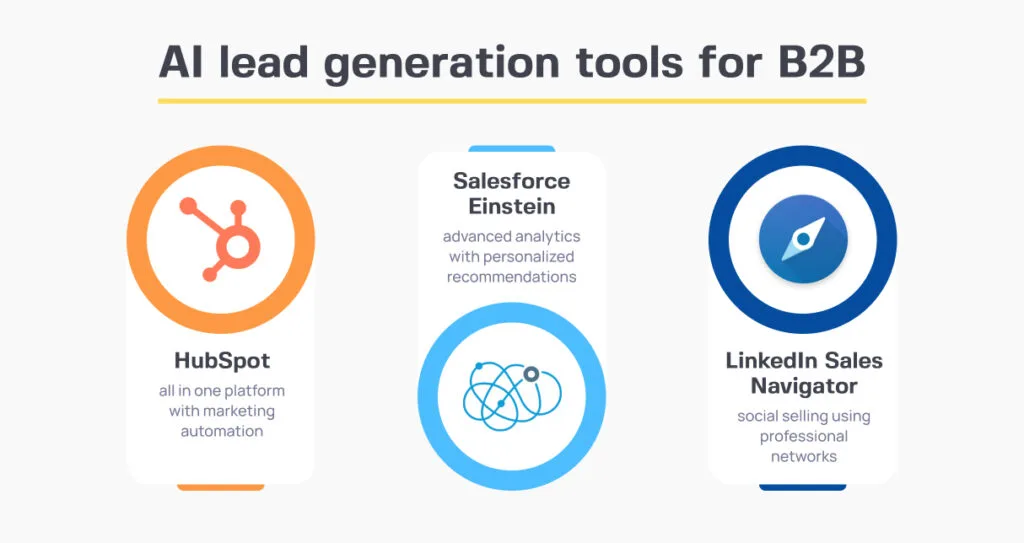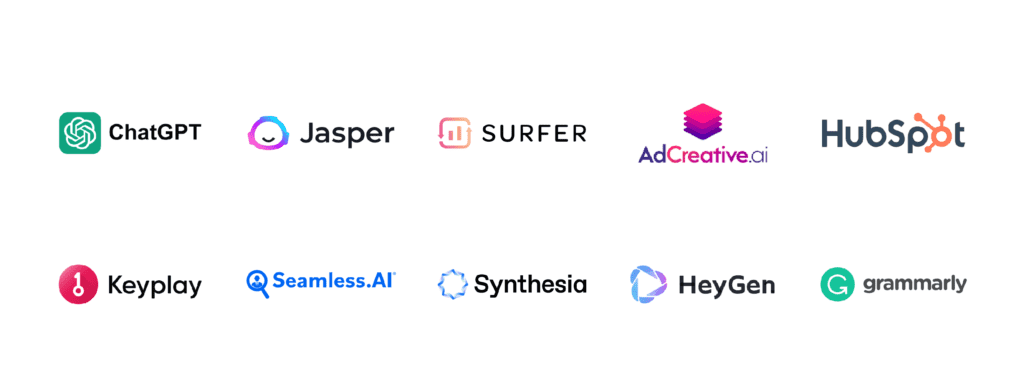AI Automation for B2B: Techniques to Boost Your Company Efficiency
AI automation in the B2B sector offers a crucial opportunity for organizations to boost their performance. By improving procedures and boosting decision-making, companies can achieve substantial performances. The effective integration of AI requires mindful consideration of different factors. Comprehending which areas to automate and selecting proper devices are just the beginning. The capacity for improvement elevates vital questions concerning implementation and continuous examination. What approaches will guarantee long lasting success in this progressing landscape?
Recognizing AI Automation in B2B Context
As organizations significantly look for performance and technology, understanding AI automation in the B2B context becomes vital. AI automation leverages advanced modern technologies to simplify procedures, boost decision-making, and boost general efficiency. By incorporating AI tools, business can optimize operations such as supply chain management, consumer partnership management, and information evaluation. These innovations can examine huge amounts of information rapidly, offering actionable understandings that drive strategic campaigns. In addition, AI-driven automation decreases human error and releases up workers to concentrate on even more complex jobs. By fostering partnership between human intelligence and machine capacities, organizations can achieve a competitive edge. Ultimately, comprehending AI automation is important for B2B organizations aiming to flourish in an increasingly digital market.
Determining Areas for Automation
In the mission for effective AI automation in B2B, it is important to recognize certain locations where automation can produce considerable benefits. This consists of reviewing job monotone, checking out opportunities for data handling, and identifying process bottlenecks. By focusing on these facets, organizations can improve operations and boost efficiency.
Job Repetitiveness Assessment
Job monotone assessment plays an important role in identifying areas ripe for automation within B2B operations. Minarik AI. This procedure involves analyzing everyday tasks to determine which are recurring and lengthy, consequently hindering efficiency (AI Automation For B2B). By inspecting workflows, services can pinpoint certain features that require too much manual input, such as data access, invoice processing, or consumer follow-ups. Recognizing these repeated jobs allows organizations to allot resources a lot more effectively, improving total efficiency. Furthermore, automation can lessen human mistake, improve operations, and cost-free up employees to concentrate on higher-value tasks. Conducting a detailed task repetitiveness evaluation equips B2B companies to take on targeted automation strategies, eventually driving enhanced efficiency and affordable benefit in the industry
Information Handling Opportunities

Process Traffic Jam Identification
Recognizing process traffic jams is an important step in recognizing the full advantages of automation within B2B organizations. These bottlenecks usually materialize as hold-ups, resource restrictions, or ineffective processes that hinder efficiency. To properly pinpoint these areas, companies can perform extensive evaluations of their workflows, using metrics such as cycle time and throughput. Involving employees in discussions concerning discomfort points can likewise supply beneficial insights. When traffic jams are recognized, organizations can prioritize them based on effect and expediency for automation. By purposefully addressing these inefficiencies, B2B business can enhance procedures, boost cooperation, and inevitably boost overall performance. This proactive technique to process analysis lays the foundation for effective automation campaigns that drive organization development.
Picking the Right AI Devices and Technologies
As organizations significantly transform to AI to improve their procedures, choosing the right tools and technologies becomes necessary for achieving wanted outcomes. Organizations should evaluate their specific demands and goals, taking into consideration variables such as scalability, compatibility, and user-friendliness. A thorough market evaluation can aid identify leading AI remedies tailored for their market. In addition, businesses should evaluate the technological facilities required to sustain these tools, ensuring smooth integration with existing systems. Information safety and compliance with laws are likewise critical factors to consider that influence device selection. By concentrating on these criteria, firms can make educated choices that drive efficiency and performance, ultimately causing improved service efficiency. The best AI devices empower organizations to introduce and maintain an one-upmanship on the market.
Creating a Strategic Application Strategy
An effective tactical application prepare for AI automation in B2B requires clearly defined crucial purposes. Additionally, organizations need to assess their current abilities to recognize voids and opportunities for improvement. Constant surveillance and change of the strategy will ensure positioning with progressing organization needs and technology developments.
Specify Secret Goals
To ensure effective AI automation in B2B atmospheres, specifying vital purposes is vital for creating a strategic implementation plan. Organizations must identify certain, quantifiable objectives that line up with their general organization approach. This clearness gives a roadmap for the automation procedure, making certain that initiatives are focused on locations that will certainly generate the greatest effect. Trick objectives may include improving operational efficiency, boosting client satisfaction, or enhancing revenue. Establishing these purposes allows teams to prioritize sources successfully and track development gradually. Furthermore, clear objectives promote much better communication amongst stakeholders, promoting collaboration and placement throughout the company. Ultimately, distinct goals act as the structure for a robust AI automation strategy that drives service efficiency.
Evaluate Existing Abilities
Prior to applying AI automation, companies should extensively examine their present capabilities to recognize strengths and weak points. This examination entails taking a look at existing modern technologies, workforce skills, and functional procedures. By performing an in-depth audit, organizations can identify locations that require enhancement or financial investment. Organizations should likewise consider their information management methods, as the high quality and accessibility of data are crucial for effective AI assimilation. Understanding the present technical landscape makes it possible for firms to align their resources and abilities with their calculated purposes. In addition, it is vital to evaluate business culture and readiness for modification, as these aspects substantially affect the fostering of AI remedies. This analysis functions as the structure for creating a critical execution strategy that makes best use of the potential of AI automation.
Display and Readjust
Applying AI automation calls for a vibrant technique that highlights constant monitoring and adjustment. Businesses must create a critical execution plan that incorporates regular analyses of AI efficiency against predefined metrics. This involves tracking key performance indications (KPIs) to examine the efficiency of automation services. By examining information, companies can recognize locations for enhancement and fine-tune their AI systems as necessary. Engaging with stakeholders throughout the procedure assures that the automation straightens with service objectives and customer requirements. Additionally, cultivating a culture of flexibility enables firms to respond swiftly to altering market conditions and technical advancements. Growth Systems For B2B. Eventually, recurring tracking and change not only boost operational performance but likewise drive continual service efficiency in the competitive B2B landscape
Ensuring Information Quality and Combination
As companies increasingly depend on AI automation in B2B procedures, guaranteeing information quality and assimilation becomes essential for success. Premium information is essential for precise analytics, educated decision-making, and reliable customer interaction. Information must be cleaned, standardized, and confirmed to remove errors and disparities that might cause illinformed insights. Additionally, seamless combination throughout various platforms and systems is necessary; disparate data silos hinder automation efforts and decrease operational efficiency. Organizations ought to embrace robust data governance frameworks and utilize advanced tools to help with data integration while maintaining quality standards. By focusing on these elements, businesses can enhance their AI automation campaigns, inevitably bring about boosted efficiency and a competitive advantage in the B2B landscape.
Measuring Success and ROI of AI Initiatives
Just how can companies successfully determine the success and return on investment (ROI) of their AI initiatives? To gauge performance, organizations must establish clear, quantifiable objectives lined up with tactical objectives. Trick performance indicators (KPIs) my blog such as price savings, revenue development, and efficiency improvements can give useful insights. Organizations often perform baseline analyses before implementing AI, allowing them to compare pre- and post-implementation metrics. Furthermore, analyzing consumer contentment and engagement can disclose the influence of AI on customer experience. Regularly reviewing these metrics aids in refining AI methods and guaranteeing placement with service objectives. By utilizing an organized method to dimension and assessment, companies can accurately examine the effectiveness of their AI efforts and make educated decisions regarding future financial investments.
Conquering Obstacles in AI Fostering
Although lots of companies recognize the capacity of AI to change their procedures, they frequently come across substantial challenges during fostering. Trick hurdles consist of an absence of experienced personnel, which hinders the effective application and administration of AI innovations. Organizations also face integration issues, as existing systems might not work with brand-new AI options. Furthermore, worries relating to data privacy and security can lead to resistance in totally accepting AI abilities. Resistance to alter from workers can even more complicate the change, requiring complete training and communication techniques. To overcome these obstacles, companies ought to buy skill advancement, warranty durable data administration, and promote a culture that welcomes advancement, ultimately leading the way for successful AI assimilation and enhanced organization efficiency
Regularly Asked Concerns
Just How Can AI Automation Improve Customer Connection Monitoring in B2B?
AI automation can enhance client partnership management in B2B by enhancing interaction, providing tailored communications, evaluating client information for understandings, automating follow-ups, and improving action times, inevitably fostering stronger connections and driving sales development.
What Industries Advantage The Majority Of From AI Automation in B2B?
Manufacturing, finance, health care, and logistics markets profit most from AI automation in B2B. These fields leverage automation to enhance procedures, boost information evaluation, improve customer interactions, and eventually boost operational efficiency and profitability.
Exactly How Does AI Automation Effect Worker Roles in B2B Companies?
AI automation transforms worker roles in B2B business by improving jobs, decreasing repeated work, and allowing staff to focus on tactical initiatives. This shift boosts performance and cultivates a society of advancement and versatility.
What Are the Expenses Connected With Executing AI Automation?
The costs linked with applying AI automation consist of preliminary software application acquisition, infrastructure upgrades, training expenses, recurring upkeep, and prospective integration obstacles. Minarik AI. Companies must additionally think about long-term functional shifts and staff member adaptation expenditures in their monetary preparation
Exactly How Can Businesses Make Certain Honest AI Usage in Their Operations?
Organizations can ensure moral AI use by developing clear guidelines, advertising transparency, carrying out normal audits, including varied stakeholders, and prioritizing data personal privacy. Continuous training and understanding programs further improve understanding and adherence to ethical methods.
